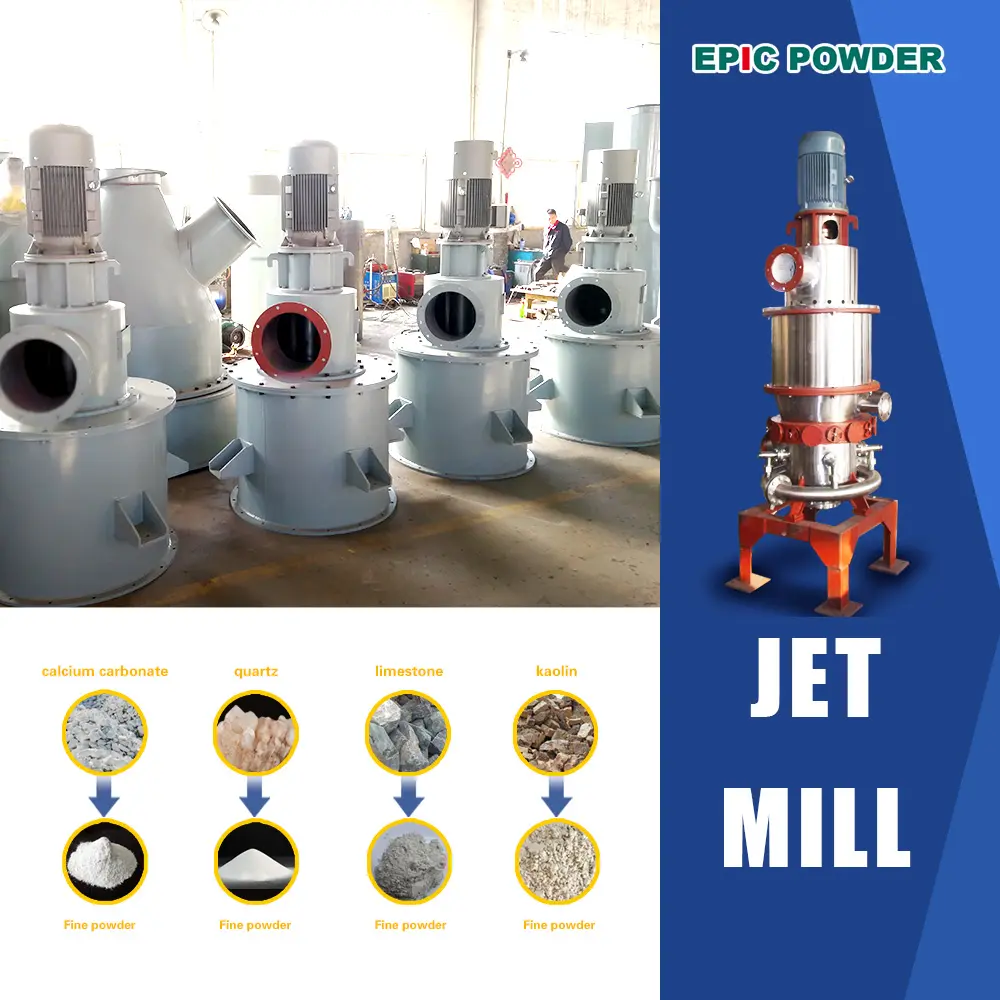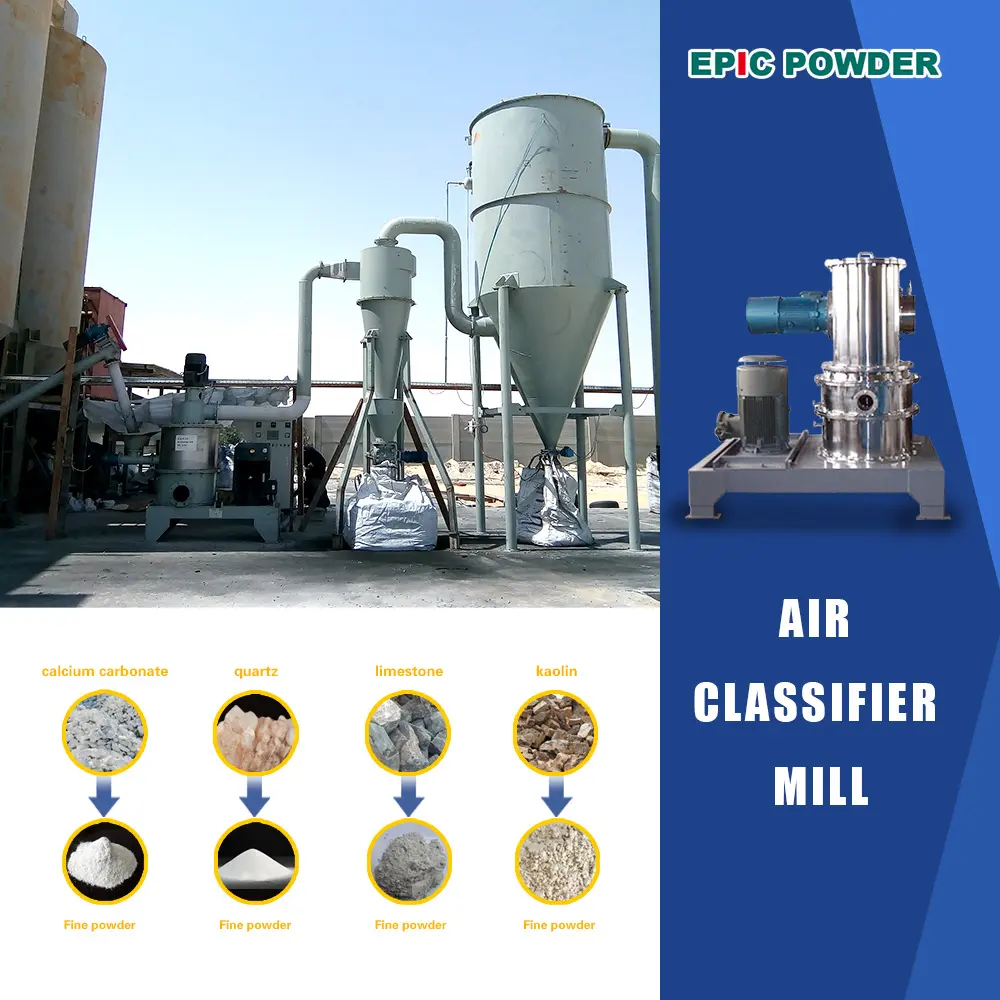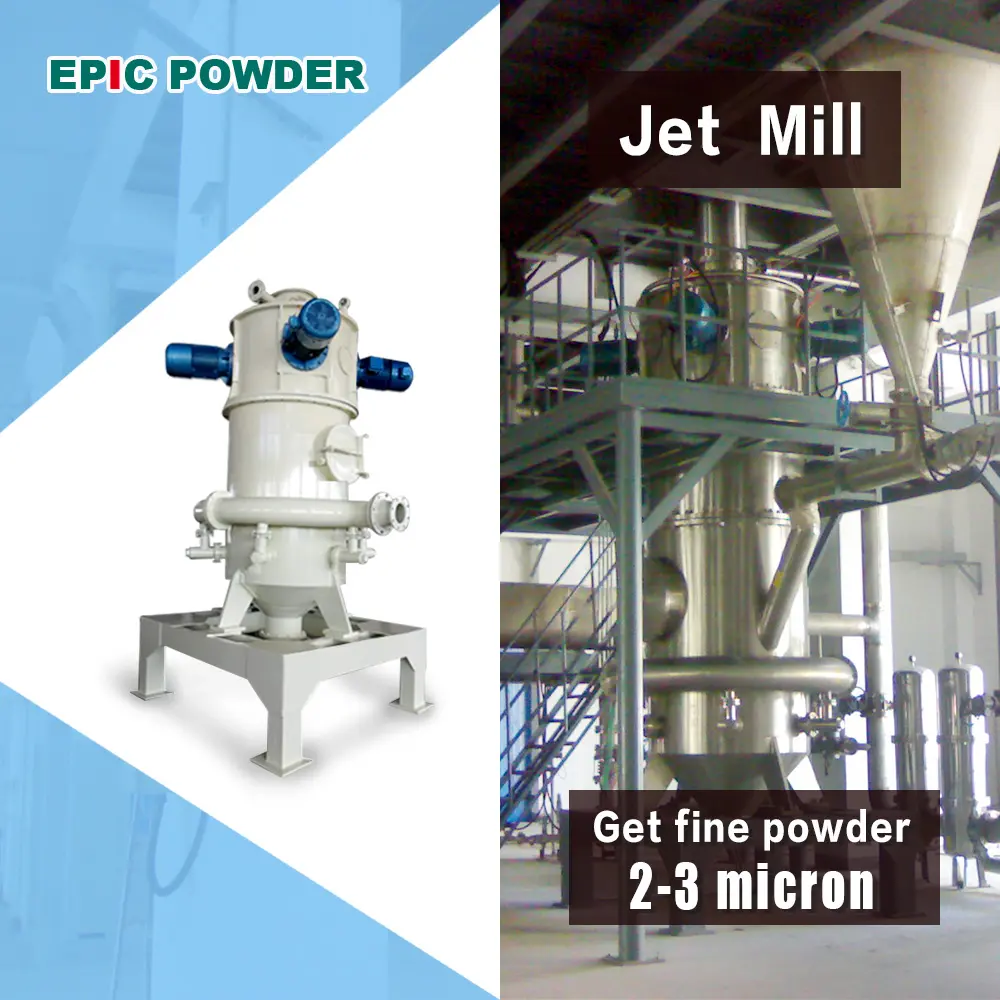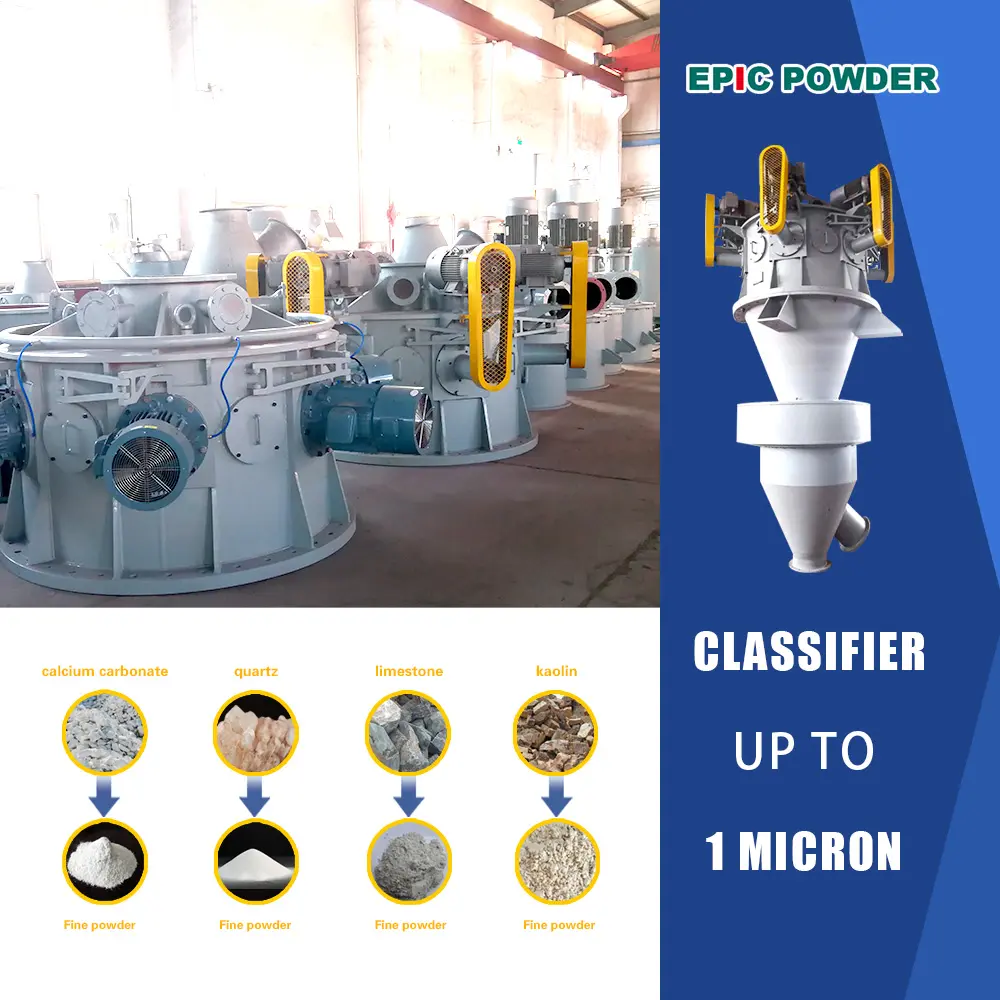Both jet mills and air classifier mills are valuable tools for particle size reduction and powder processing applications. While jet mills excel at precise particle size control and contamination-free grinding, air classifier mills offer improved control through integrated classification stages and versatility in handling various materials. The selection between these two technologies depends on specific application requirements, desired particle size distribution, material characteristics, and energy considerations. Understanding the differences between jet mills and air classifier mills enables informed decision-making when choosing the most appropriate milling technique for a given application. In this article, it will display the energy efficiency of jet mills and air classifier mills, as well as their maintenance requirements.

How does the energy efficiency of jet mills compare to air classifier mills
Jet mills and air classifier mills both reduce particle size, but they differ in energy efficiency. Jet mills often use less energy because of their fluid energy design, which cuts down on the need for mechanical parts. Air classifier mills typically need more power because they rely on mechanical impact using grinding pins or hammers.
Here’s a comparison of the energy efficiency and other factors:
Energy Efficiency: Jet mills are generally more energy-efficient than air classifier mills. Jet mills use fluid energy, while air classifier mills use mechanical impact, which demands more power.
Maintenance: Jet mills typically have fewer moving parts, which simplifies maintenance and reduces wear, leading to lower maintenance needs. Air classifier mills have more parts, like rotors and classifier wheels, that may need regular maintenance.
Material Suitability: Jet mills work best with hard, dry materials, while air classifier mills can handle a wider range, including some moisture-sensitive ones.
Particle Size Control: Jet mills are ideal for making ultra-fine powders with precise particle size control, making them suitable for low-contamination industries. Air classifier mills offer versatility in particle size distribution, and you can adjust the classifier wheel speed to achieve the desired fineness for different applications.
Volume Handling: Air classifier mills can handle a higher volume of material.

How do the maintenance requirements differ between jet mills and air classifier mills
Jet mills and air classifier mills differ in their maintenance requirements due to their distinct designs and operating principles.
Jet Mills
Generally have fewer moving parts, which simplifies maintenance and reduces wear and tear. The design reduces wear at the impact point, making them ideal for processing hard and abrasive materials. Cleaning typically involves using a dry cloth, hand brush, and/or industrial vacuum cleaner. Shouldn’t be cleaned with high-pressure cleaners or compressed air, as it may cause serious damage to the bearings in the classifier motor. Easier maintenance contributes to lower operational costs over time.

Air Classifier Mills
Air Classifier Mills have more components, such as rotors and classifier wheels, which may need regular maintenance. The mechanical parts may experience more wear when processing hard materials. More complex due to additional components like an integrated classifier, adding complexity to the design and operation. In summary, jet mills generally require less maintenance due to their simpler design with fewer moving parts, while air classifier mills, with their more complex machinery, typically need more regular and involved maintenance. This difference in maintenance requirements can impact the overall cost and downtime of milling operations.

EPIC Powder’s Role in Milling Solutions
Innovative Technologies
EPIC Powder stands at the forefront of powder processing technology. You will benefit from our cutting-edge innovations, which enhance milling efficiency and precision. The company has developed a range of powder surface modification equipment. This includes advanced tools: the three-roller coating machine, pin mill, and turbo mill. These innovations let you change the surface chemistry and shape of powders. They fit many industrial uses. By integrating these technologies, you can achieve superior product quality and performance.
Custom Solutions for Industry Needs
EPIC Powder understands that each industry has unique requirements. We offer tailored solutions to meet your specific milling needs. EPIC Powder provides custom equipment and services for pharma, food, and mineral industries. Our expertise ensures that you receive solutions that align with your operational goals. You can trust our commitment to high-quality, efficient, and reliable milling solutions. By choosing EPIC Powder, you get a partner. We will optimize your production and boost your competitiveness.
Choosing between a jet mill and an air classifier mill depends on your specific needs. Jet mills are great at making ultra-fine powders. They control particle size precisely. This makes them ideal for low-contamination industries. Air classifier mills offer versatility and higher throughput, processing various materials efficiently.
- Jet Mills:
- Best for ultra-fine powders.
- Suitable for heat-sensitive materials.
- Air Classifier Mills:
- Versatile in particle size distribution.
- Energy-efficient with higher throughput.
For businesses with regular full-scale production, milling in-house can be a cost-effective option. EPIC Powder is expert at providing custom milling solutions for your industry.